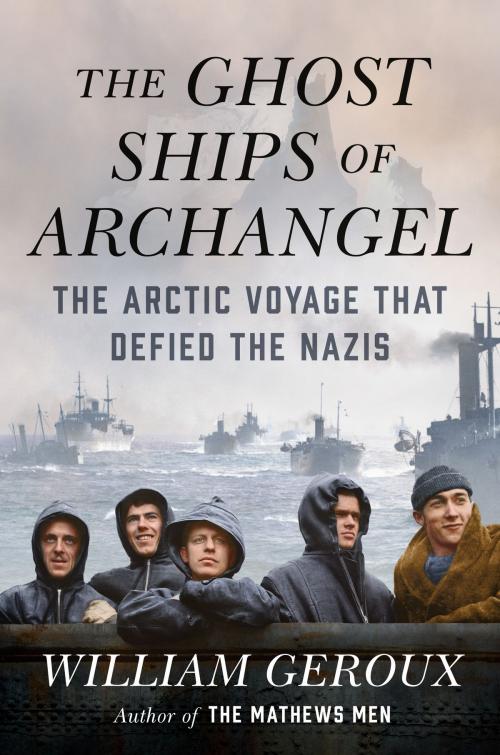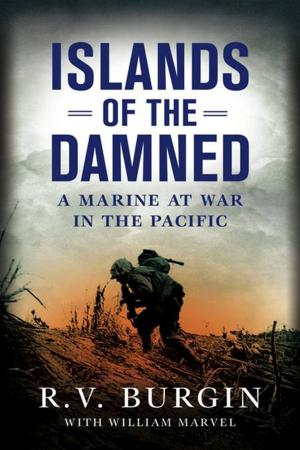The Ghost Ships of Archangel
The Arctic Voyage That Defied the Nazis
Nonfiction, History, Military, Naval, World War II| Author: | William Geroux | ISBN: | 9780525557470 |
| Publisher: | Penguin Publishing Group | Publication: | May 14, 2019 |
| Imprint: | Viking | Language: | English |
| Author: | William Geroux |
| ISBN: | 9780525557470 |
| Publisher: | Penguin Publishing Group |
| Publication: | May 14, 2019 |
| Imprint: | Viking |
| Language: | English |
An extraordinary story of survival and alliance during World War II: the icy journey of four Allied ships crossing the Arctic to deliver much needed supplies to the Soviet war effort.
On the fourth of July, 1942, four Allied ships traversing the Arctic separated from their decimated convoy to head further north into the ice field of the North Pole, seeking safety from Nazi bombers and U-boats in the perilous white maze of ice floes, growlers, and giant bergs. Despite the risks, they had a better chance of survival than the rest of Convoy PQ-17, a fleet of thirty-five cargo ships carrying $1 billion worth of war supplies to the Soviet port of Archangel--the limited help Roosevelt and Churchill extended to Soviet dictator Joseph Stalin to maintain their fragile alliance, even as they avoided joining the fight in Europe while the Eastern Front raged.
The high-level politics that put Convoy PQ-17 in the path of the Nazis were far from the minds of the diverse crews aboard their ships. U.S. Navy Ensign Howard Carraway, aboard the SS Troubadour, was a farm boy from South Carolina and one of the many Americans for whom the convoy was to be a first taste of war; aboard the SS Ironclad, Ensign William Carter of the U.S. Navy Reserve had passed up a chance at Harvard Business School to join the Navy Armed Guard; from the Royal Navy Reserve, Lt. Leo Gradwell was given command of the HMT Ayrshire, a fishing trawler that had been converted into an antisubmarine vessel. All the while, The Ghost Ships of Archangel turns its focus on Roosevelt, Churchill, and Stalin, playing diplomatic games that put their ships in peril.
The twenty-four-hour Arctic daylight in midsummer gave no respite from bombers, and the Germans wielded the terrifying battleship Tirpitz, nicknamed The Big Bad Wolf. Icebergs were as dangerous as Nazis. As a newly forged alliance was close to dissolving and the remnants of Convoy PQ-17 tried to slip through the Arctic in one piece, the fate of the world hung in the balance.
An extraordinary story of survival and alliance during World War II: the icy journey of four Allied ships crossing the Arctic to deliver much needed supplies to the Soviet war effort.
On the fourth of July, 1942, four Allied ships traversing the Arctic separated from their decimated convoy to head further north into the ice field of the North Pole, seeking safety from Nazi bombers and U-boats in the perilous white maze of ice floes, growlers, and giant bergs. Despite the risks, they had a better chance of survival than the rest of Convoy PQ-17, a fleet of thirty-five cargo ships carrying $1 billion worth of war supplies to the Soviet port of Archangel--the limited help Roosevelt and Churchill extended to Soviet dictator Joseph Stalin to maintain their fragile alliance, even as they avoided joining the fight in Europe while the Eastern Front raged.
The high-level politics that put Convoy PQ-17 in the path of the Nazis were far from the minds of the diverse crews aboard their ships. U.S. Navy Ensign Howard Carraway, aboard the SS Troubadour, was a farm boy from South Carolina and one of the many Americans for whom the convoy was to be a first taste of war; aboard the SS Ironclad, Ensign William Carter of the U.S. Navy Reserve had passed up a chance at Harvard Business School to join the Navy Armed Guard; from the Royal Navy Reserve, Lt. Leo Gradwell was given command of the HMT Ayrshire, a fishing trawler that had been converted into an antisubmarine vessel. All the while, The Ghost Ships of Archangel turns its focus on Roosevelt, Churchill, and Stalin, playing diplomatic games that put their ships in peril.
The twenty-four-hour Arctic daylight in midsummer gave no respite from bombers, and the Germans wielded the terrifying battleship Tirpitz, nicknamed The Big Bad Wolf. Icebergs were as dangerous as Nazis. As a newly forged alliance was close to dissolving and the remnants of Convoy PQ-17 tried to slip through the Arctic in one piece, the fate of the world hung in the balance.















